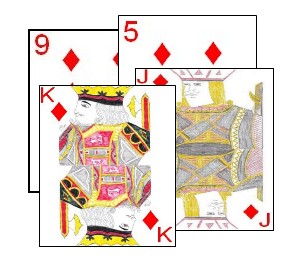
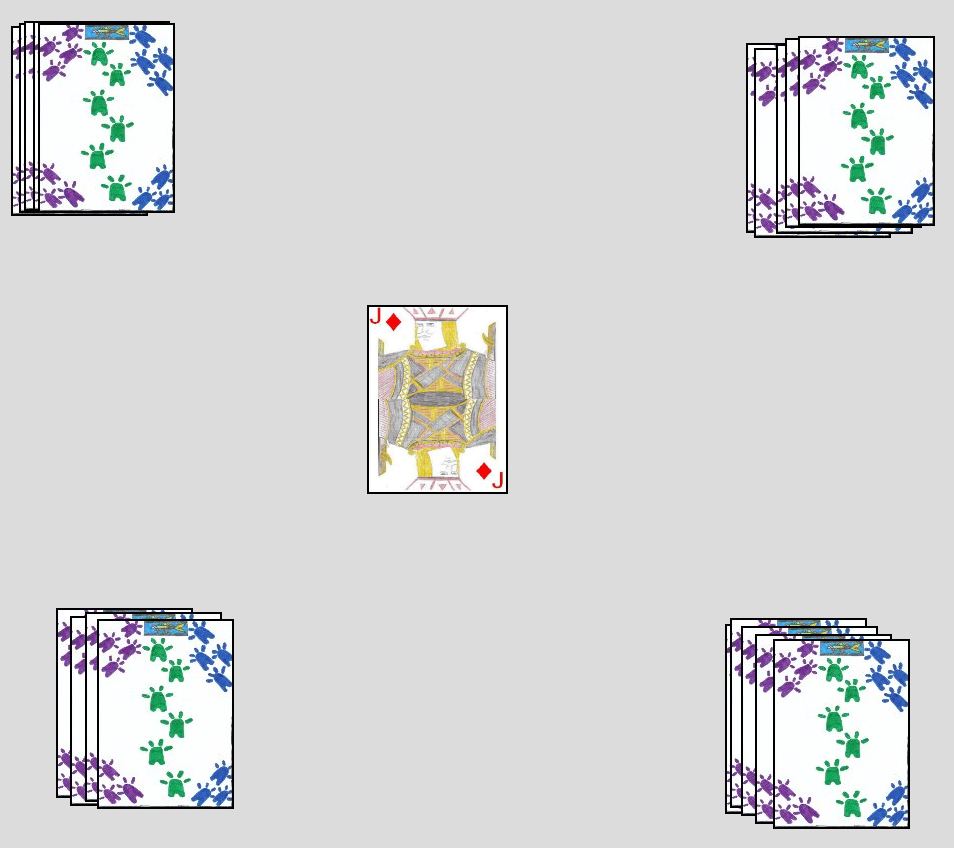 The individual who is to be the first dealer then begins the hand by dealing the cards, face down and one at time, clockwise around the table, starting at the player to his immediate left.
However, the very last card, which would be the last card dealt to the dealer himself, is instead placed face up in the center of the table. This card indicates the trump suit, with this and all other cards of this same suit designated as "trump" for this hand. Once it is the dealer's turn to play to the first trick, he picks up this card and adds it to his hand.
After each hand, the right to deal rotates clockwise around the table to each player in turn.
The individual who is to be the first dealer then begins the hand by dealing the cards, face down and one at time, clockwise around the table, starting at the player to his immediate left.
However, the very last card, which would be the last card dealt to the dealer himself, is instead placed face up in the center of the table. This card indicates the trump suit, with this and all other cards of this same suit designated as "trump" for this hand. Once it is the dealer's turn to play to the first trick, he picks up this card and adds it to his hand.
After each hand, the right to deal rotates clockwise around the table to each player in turn.

|
| If no trumps are played to the trick, it is won by the highest card of the suit led. |
To begin the play of the hand, the player to the dealers left plays the first card (leads) to the first trick. Each trick consists of four cards, one played by each player in a clockwise direction. Thus, each subsequent player must then play a card of the same suit as that of the lead card. If he does not have a card of the same suit as the lead card, he may play any card in his hand (including a card of the trump suit). The trick is won by the highest ranked card of the suit led unless anyone played a trump card to the trick. In that case, the trick is won by the player who played the highest trump.
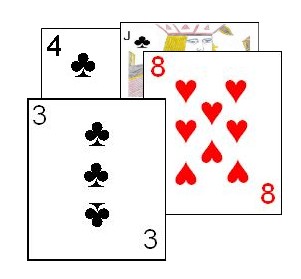
|
| The highest trump card played to a trick wins that trick. Thus, if hearts were trump, the eight of hearts would win this trick even though it was not the suit led. |
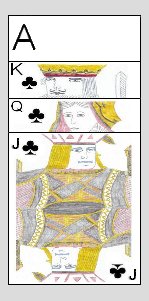
|
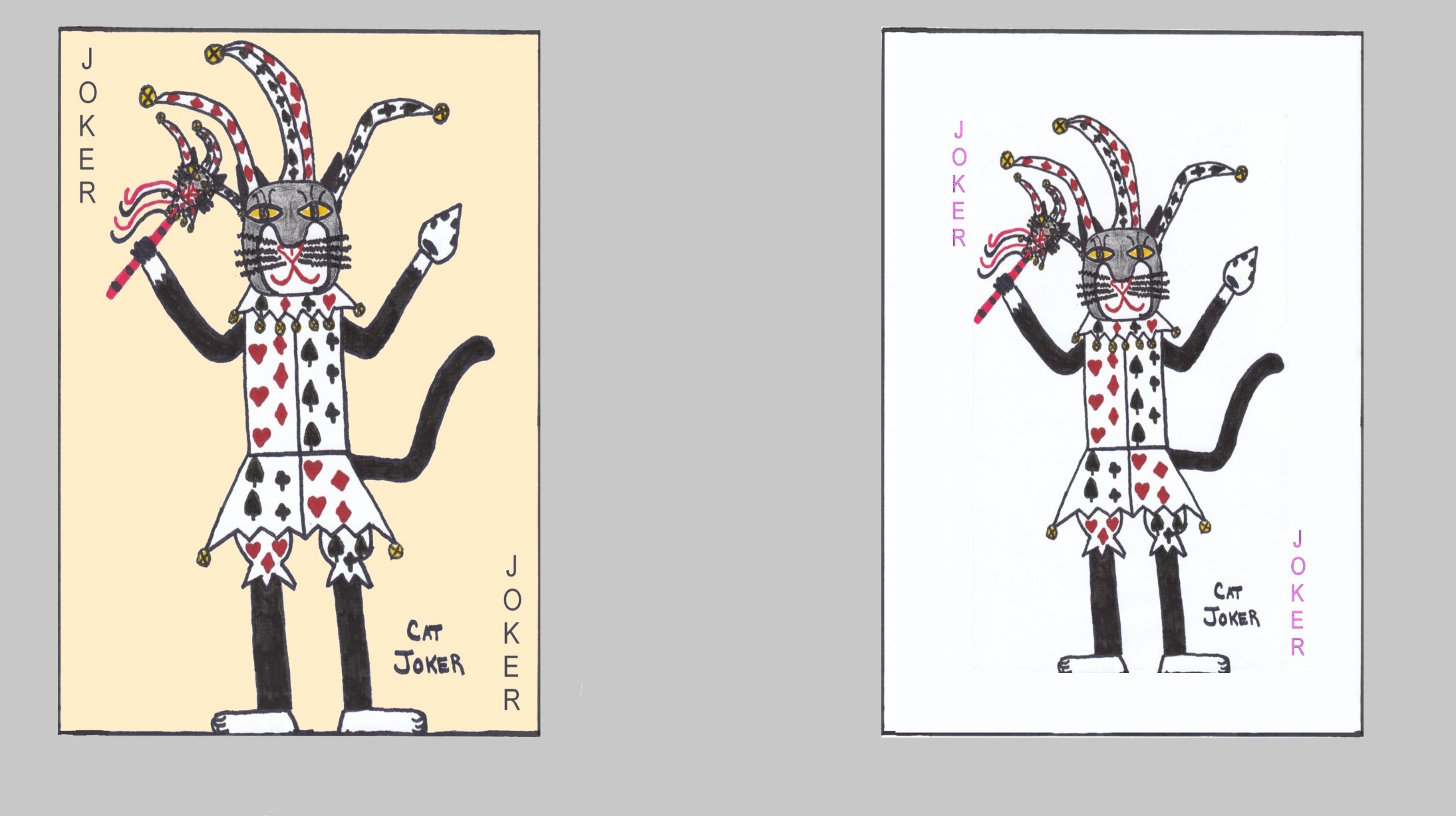 After determination of the partnerships and deal, the dealer deals 12 cards to each player, face down and one at a time. The remaining 6 cards of the deck are set, face down in the center of the table to form the kitty. Although determination of partnerships can be done as in standard Whist above, the first dealer is determined by the player who draws the first diamond from the face down fanned out deck. The specific ranking of the cards in Bid Whist will be somewhat
dependent on the specific bid. See below, for the ranking of cards based on the winning bid.
After determination of the partnerships and deal, the dealer deals 12 cards to each player, face down and one at a time. The remaining 6 cards of the deck are set, face down in the center of the table to form the kitty. Although determination of partnerships can be done as in standard Whist above, the first dealer is determined by the player who draws the first diamond from the face down fanned out deck. The specific ranking of the cards in Bid Whist will be somewhat
dependent on the specific bid. See below, for the ranking of cards based on the winning bid.| Declaration | Trump Suit | Card Ranking (From high to low) | Uptown | Spades, Hearts, Diamonds or Clubs | Big Joker, Little Joker, Ace, King, Queen, Jack, 10, 9, 8, 7, 6, 5, 4, 3, 2 |
|---|---|---|
| Downtown | Spades, Hearts, Diamonds or Clubs | Big Joker, Little Joker, Ace, 2, 3, 4, 5, 6, 7, 8, 9, 10, Jack, Queen, King |
| Uptown | No Trump | Ace, King, Queen, Jack, 10, 9, 8, 7, 6, 5, 4, 3, 2 |
| Downtown | No Trump | Ace, 2, 3, 4, 5, 6, 7, 8, 9, 10, Jack, Queen, King |
| Bid Rank | Bid Name | Description | Point Value |
|---|---|---|---|
| 1 | Propose | When stating a proposal, the bidder is indicating a contract to win eight tricks, with the stipulation that another player will play as his partner for the hand. When a bidder declares this bid, the next player in turn may either pass, make a higher bid which overrides this bid (called overcall) or Accept the proposal. If he accepts the proposal, he becomes the bidders temporary partner for the hand, attempting to win 8 tricks between himself and the bidder. The suit of the exposed last card of the deal is set as the trump card for the deal. | 1 |
| 2 | Solo | A bid of Solo indicates an intention of the bidder to win at least five tricks during the hand. The player plays solo against the other 3 players and the suit of last exposed card from the deal is used as trump during the hand. | 2 |
| 3 | Misere | This is a bid by the player to not win any tricks. No trump suit is used for the hand. | 3 |
| 4 | Abundance | A player bidding Abundance is indicating an attempt to win at least 9 tricks. He plays alone against the other three players using a trump suit which he designates. The player does not declare this trump suit until before the first lead of the play. | 4 |
| 5 | Abundance in Trump | This bid is similar to standard Abundance in that the player indicates he will play alone against the other players and intends to win 9 or more tricks. However, the trump suit used will be the one indicated by the last exposed card of the deal. | 4 |
| 6 | Spread Misere | This bid indicates the player intends to play alone and win no tricks with no trump suit being used during the hand. Before the first lead to the first trick by the player to the dealers left, the bidder must expose his entire hand face up on the table. | 6 |
| 7 | Slam | This is the highest possible bid. A Slam bid indicates an intention to win every trick using a trump suit of the bidders selection. He will play alone against the other three opponents. | 8 |
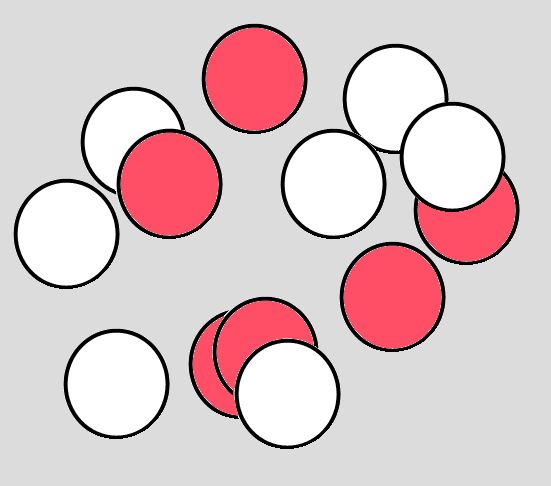 Play of the Hand and Scoring: The basic play of the hand is the same as in standard Whist. The opening lead is always made by the player to the dealers left, except when the high bid is a Slam. In that case, the high bidder declaring the slam bid leads to the first trick.
Play of the Hand and Scoring: The basic play of the hand is the same as in standard Whist. The opening lead is always made by the player to the dealers left, except when the high bid is a Slam. In that case, the high bidder declaring the slam bid leads to the first trick.
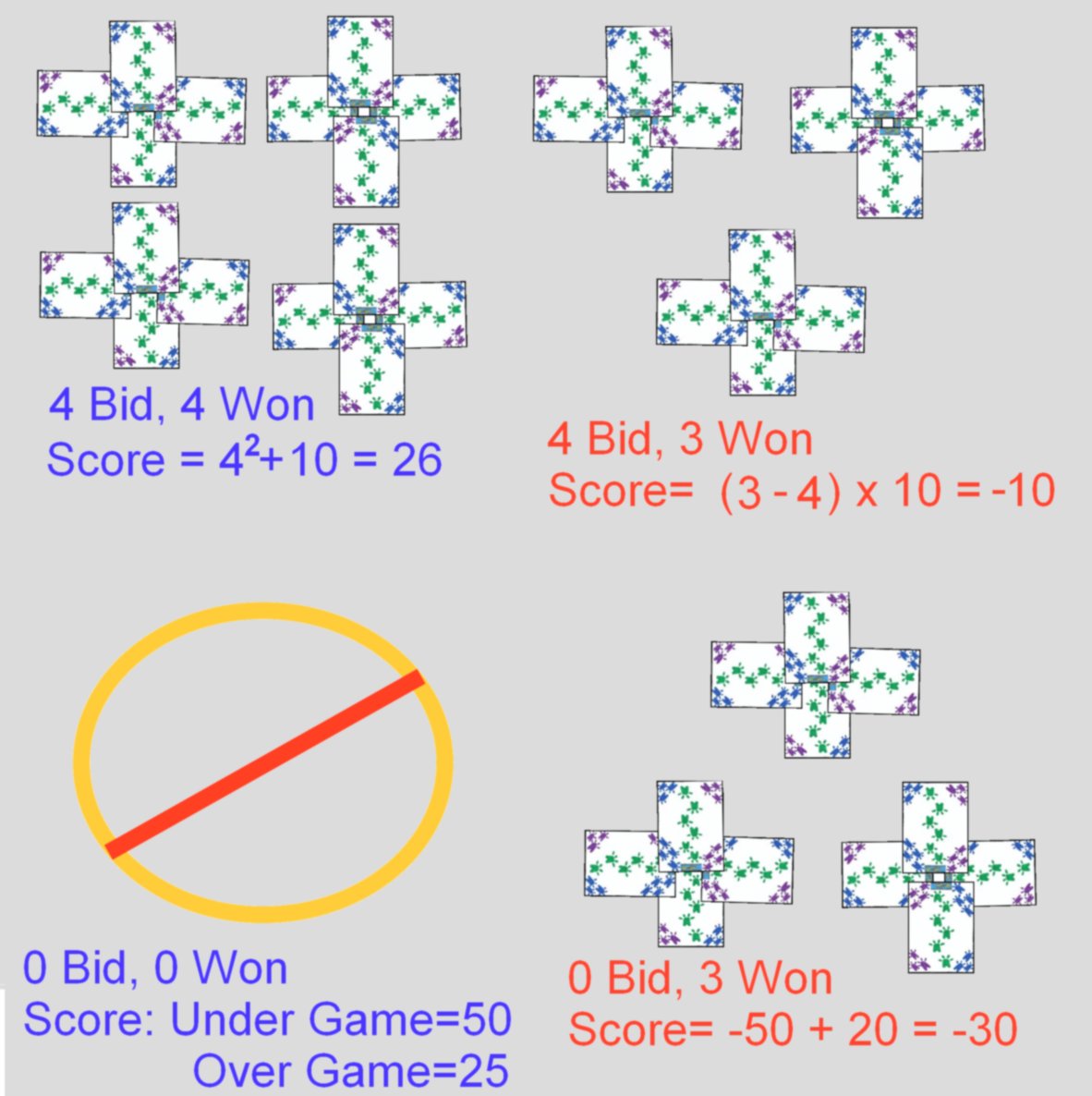 Once each player has declared the number of tricks they will attempt to win, the hand begins. The high bidder in the first bidding round leads the first card to the first trick. Each other player in turn then plays one card to the trick. A player must play a card of the same suit first led to the trick if they have one. If they do not have a card of that suit, they may play any card remaining in their hand, including a card of the trump suit. Each trick is won by the highest card of the trump suit played to the trick. If no cards of the trump suit have been played to the trick, the trick is won by the highest card of the suit originally led to that trick. The winner of each trick leads the first card to the next trick.
Once each player has declared the number of tricks they will attempt to win, the hand begins. The high bidder in the first bidding round leads the first card to the first trick. Each other player in turn then plays one card to the trick. A player must play a card of the same suit first led to the trick if they have one. If they do not have a card of that suit, they may play any card remaining in their hand, including a card of the trump suit. Each trick is won by the highest card of the trump suit played to the trick. If no cards of the trump suit have been played to the trick, the trick is won by the highest card of the suit originally led to that trick. The winner of each trick leads the first card to the next trick.
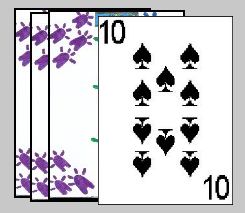 Ruff and Honours is designed to be played by four players in two partnerships. It uses the standard 52 card deck with the standard expected card ranking. Each partner should sit opposite from each other at the playing table.
Selection of partners, seating positions and first dealer can be done through a variety of methods, often using
the method of players drawing for high card from a shuffled deck.
Once determined, the dealer deals the cards, one at a time in a clockwise rotation around the table until each player has 12 face down cards in front of them. The four remaining cards are then placed face down in the center of the table. The top of these four cards is turned over to designate the trump suit for the hand. Thus, this cards and all others of this suit are considered trump for the duration of the hand.
Whichever player holds the Ace of this turned up suit has the privilege of taking these four cards and adding them to his hand. He must then select any four cards from his hand and discard then face down to the side, out of play for the remainder of the hand (this is called the Ruff).
If none of the four players hold this Ace, it being either the turned up card or one of the other three not dealt out, the dealer is given the privilege of taking the four cards and discarding.
Ruff and Honours is designed to be played by four players in two partnerships. It uses the standard 52 card deck with the standard expected card ranking. Each partner should sit opposite from each other at the playing table.
Selection of partners, seating positions and first dealer can be done through a variety of methods, often using
the method of players drawing for high card from a shuffled deck.
Once determined, the dealer deals the cards, one at a time in a clockwise rotation around the table until each player has 12 face down cards in front of them. The four remaining cards are then placed face down in the center of the table. The top of these four cards is turned over to designate the trump suit for the hand. Thus, this cards and all others of this suit are considered trump for the duration of the hand.
Whichever player holds the Ace of this turned up suit has the privilege of taking these four cards and adding them to his hand. He must then select any four cards from his hand and discard then face down to the side, out of play for the remainder of the hand (this is called the Ruff).
If none of the four players hold this Ace, it being either the turned up card or one of the other three not dealt out, the dealer is given the privilege of taking the four cards and discarding.
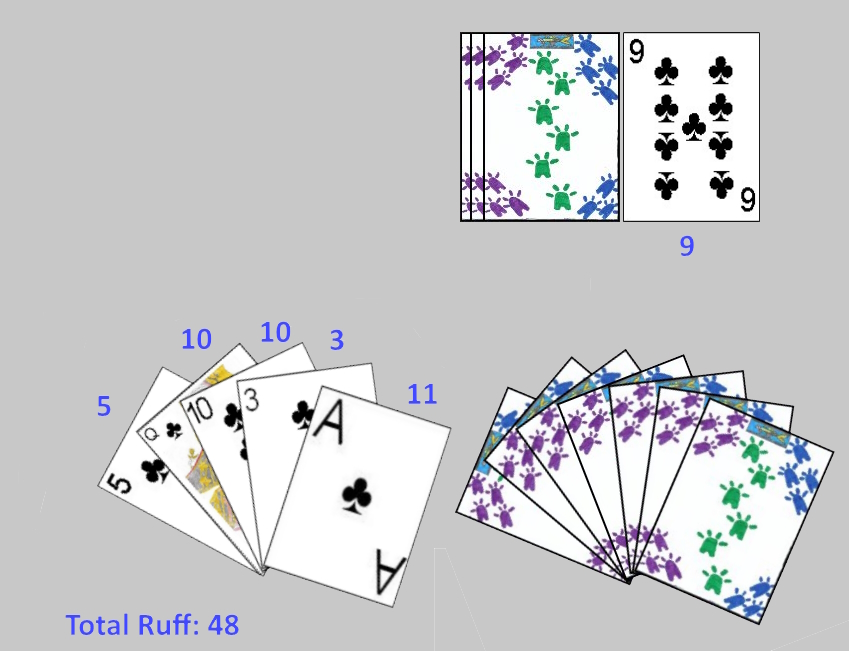 Once the players are seated and the dealer selected, the dealer should begin the deal, dealing out the cards in a clockwise rotation around the table (in packets of four cards) until each player has a total of 12 face-down cards. He places the remaining four cards, face down in the center of the table (sometimes called the "head"). The top card of this pile is then turned over, with the suit of that card designating the trump suit to be used for that hand.
Once the players are seated and the dealer selected, the dealer should begin the deal, dealing out the cards in a clockwise rotation around the table (in packets of four cards) until each player has a total of 12 face-down cards. He places the remaining four cards, face down in the center of the table (sometimes called the "head"). The top card of this pile is then turned over, with the suit of that card designating the trump suit to be used for that hand.
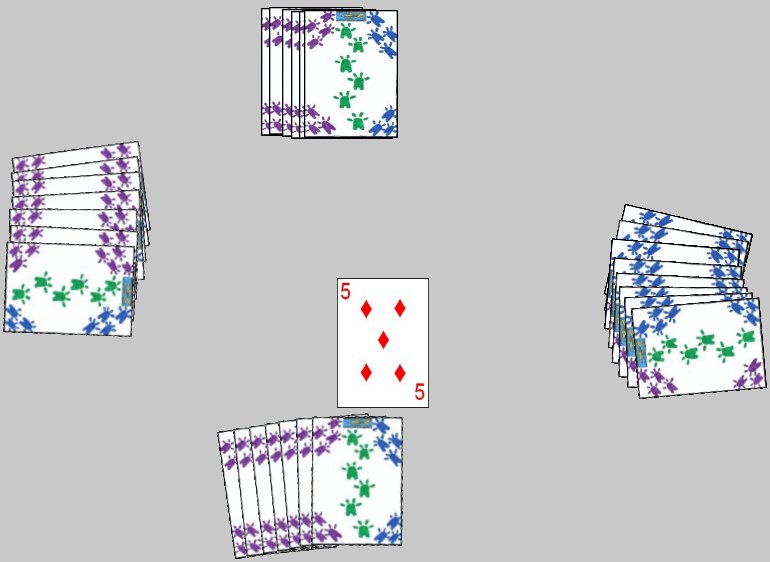 Whisk: A game reported to be even older than Ruff and Honors and the direct ancestor of both that game and standard Whist is Whisk. Although rarely played currently, it was highly popular at one time and was played almost identically to standard Whist with a few minor variations. The major difference being in the deck used. For Whisk, a 48 card deck is used which is the standard deck with all deuces removed. Thus, the ranking of the cards in each suit is as follows (from high to low); Ace, King, Queen, Jack, 10, 9, 8, 7, 6, 5, 4, 3. In the deal each player would receive a hand containing 12 cards. To determine the trump suit for the hand, the last card of the deal (which goes to the dealer) is turned face up on the table. This card and all others of the same suit are considered trump for the hand. After ensuring all players had an opportunity to note this trump, the dealer takes it into his hand. Player to the dealer's immediate left leads to the first trick and winner of each trick leads to the next. Each hand consists of each player playing to each of 12 tricks. In all other respects Whisk is played identically to standard Whist.
Whisk: A game reported to be even older than Ruff and Honors and the direct ancestor of both that game and standard Whist is Whisk. Although rarely played currently, it was highly popular at one time and was played almost identically to standard Whist with a few minor variations. The major difference being in the deck used. For Whisk, a 48 card deck is used which is the standard deck with all deuces removed. Thus, the ranking of the cards in each suit is as follows (from high to low); Ace, King, Queen, Jack, 10, 9, 8, 7, 6, 5, 4, 3. In the deal each player would receive a hand containing 12 cards. To determine the trump suit for the hand, the last card of the deal (which goes to the dealer) is turned face up on the table. This card and all others of the same suit are considered trump for the hand. After ensuring all players had an opportunity to note this trump, the dealer takes it into his hand. Player to the dealer's immediate left leads to the first trick and winner of each trick leads to the next. Each hand consists of each player playing to each of 12 tricks. In all other respects Whisk is played identically to standard Whist.
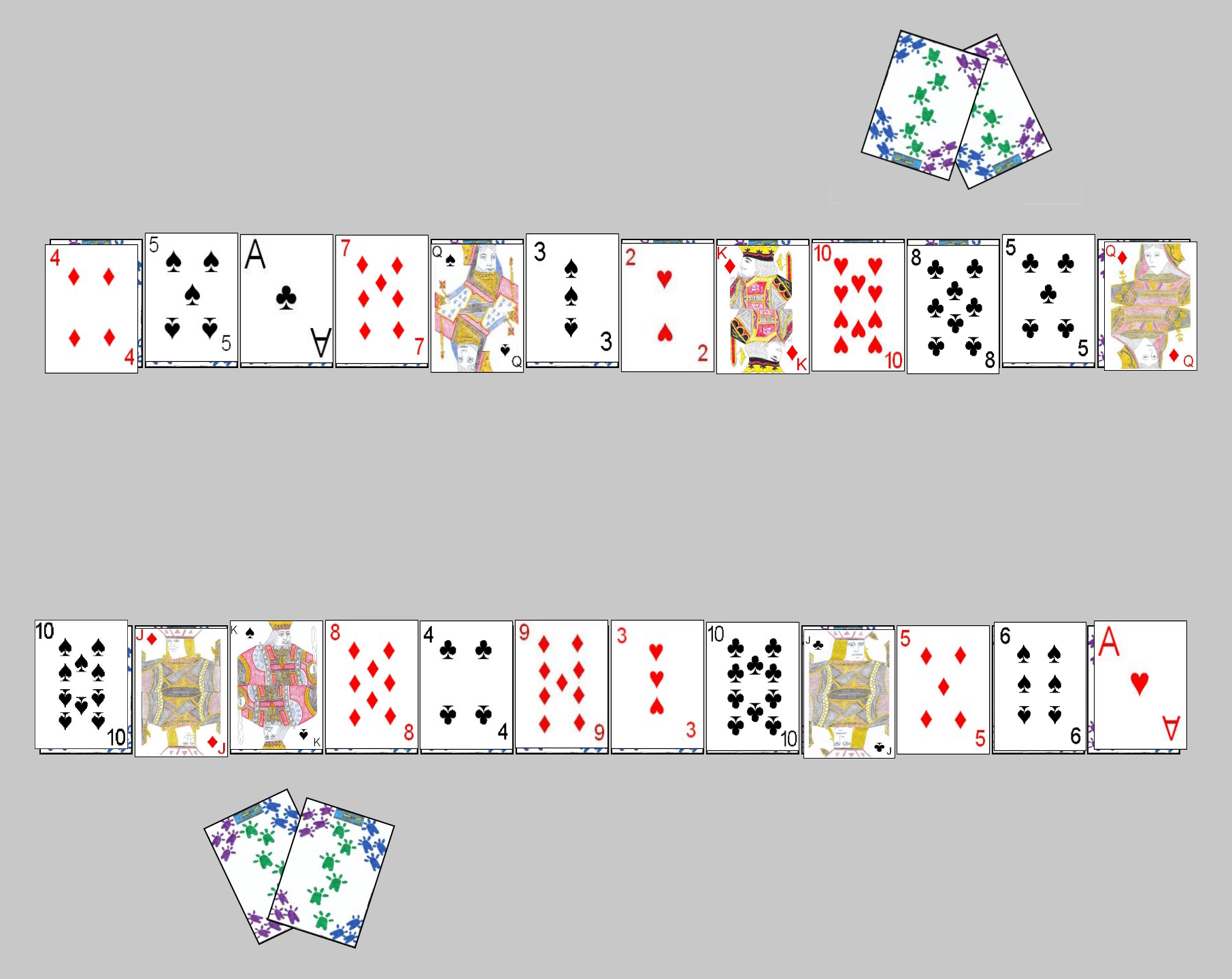 Turnover Bridge: Turnover Bridge, despite having the word "Bridge" as part of it's name is more related to a form of two-player Whist than actual Contract Bridge. This game is thus designed for two players using one standard 52 card deck. The ranking of the cards in Turnover Bridge is the same as in the standard variant of Whist.
Turnover Bridge: Turnover Bridge, despite having the word "Bridge" as part of it's name is more related to a form of two-player Whist than actual Contract Bridge. This game is thus designed for two players using one standard 52 card deck. The ranking of the cards in Turnover Bridge is the same as in the standard variant of Whist.
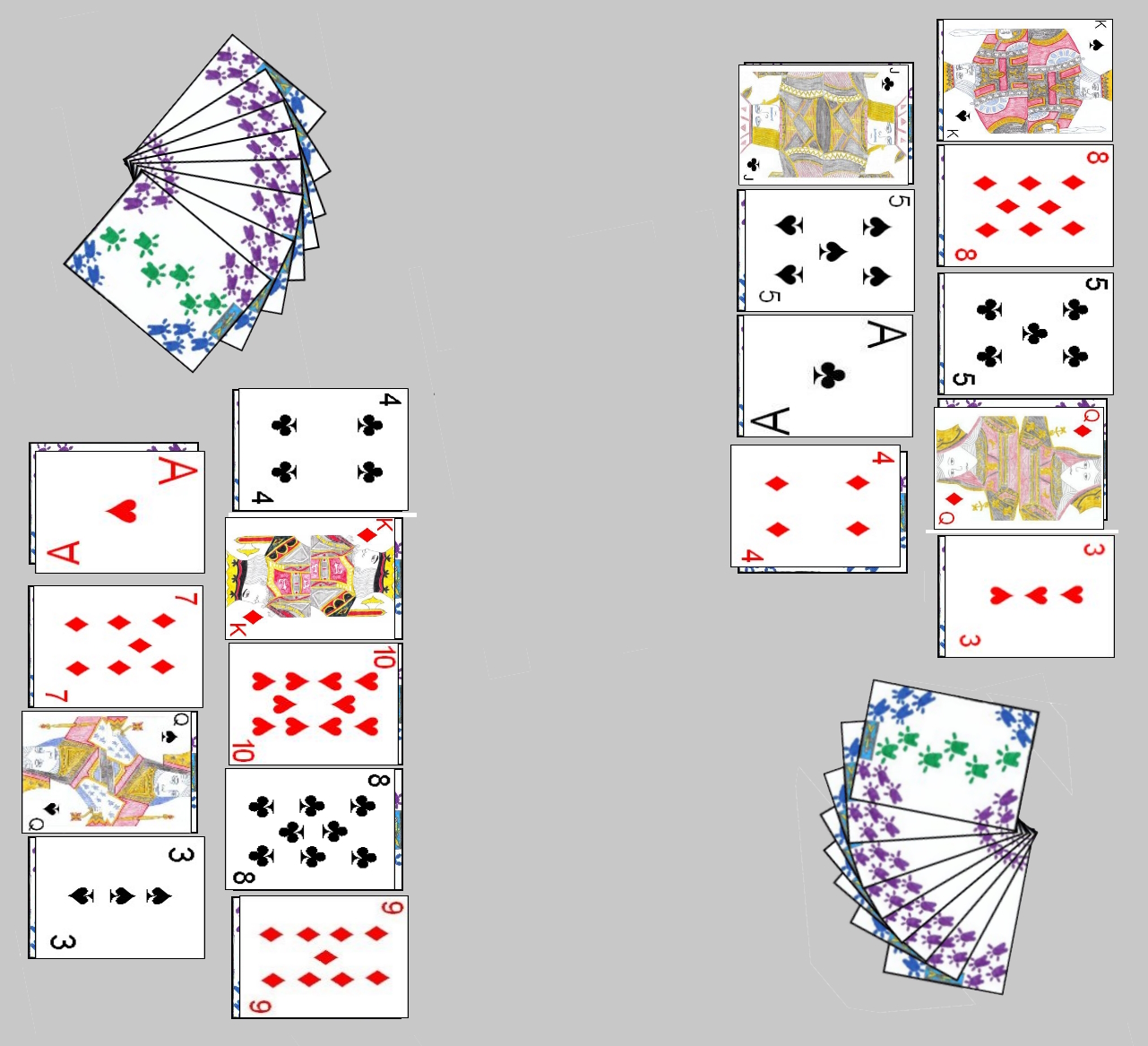 To start each hand the dealer thoroughly shuffles the deck and offers it to his opponent for the cut. After the cut, the dealer then begins distributing the cards, one at a time, starting with his opponent. During this deal, the dealer forms a layout in front of each layout. This layout first consists of 9 face-down cards in front of each player, in two horizontal rows. First an upper row of five cards and then a lower row of four cards. He then deals one face-up card on top of each of the face-down cards in these layouts. Lastly, he deals each player a hand of eight cards. Each player may then pick up his hand of eight cards. The cards dealt to the layout
must remain in the layout until legally played. However, if a player plays one of the face-up cards from his layout, he then immediately after exposes the card beneath it. That card is then available for play by that player in subsequent tricks.
To start each hand the dealer thoroughly shuffles the deck and offers it to his opponent for the cut. After the cut, the dealer then begins distributing the cards, one at a time, starting with his opponent. During this deal, the dealer forms a layout in front of each layout. This layout first consists of 9 face-down cards in front of each player, in two horizontal rows. First an upper row of five cards and then a lower row of four cards. He then deals one face-up card on top of each of the face-down cards in these layouts. Lastly, he deals each player a hand of eight cards. Each player may then pick up his hand of eight cards. The cards dealt to the layout
must remain in the layout until legally played. However, if a player plays one of the face-up cards from his layout, he then immediately after exposes the card beneath it. That card is then available for play by that player in subsequent tricks.